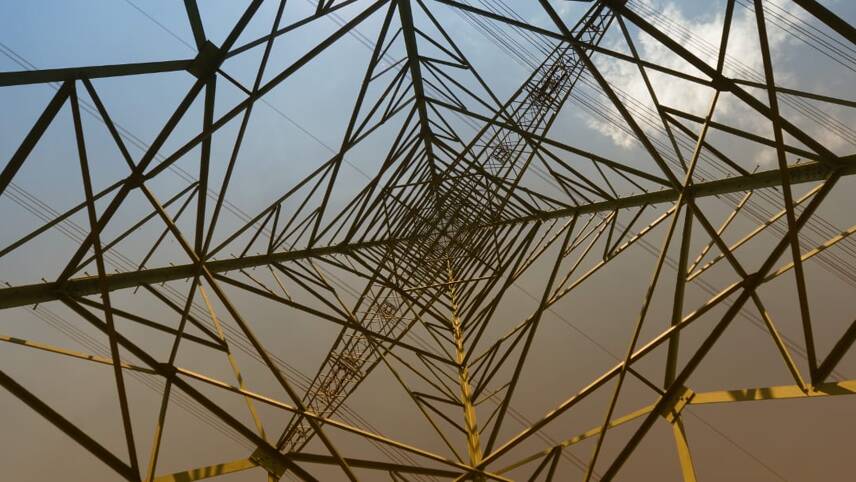Member only content free until 26/05/2024
To continue reading this article and enjoying free access to all Utility Week’s content up to the 26/05/2024 Register today!
Ready to become a member?

The chief executive of SSE has highlighted the slow buildout of transmission infrastructure as the greatest potential risk to the government’s target of installing 40GW of offshore wind generation by 2030.
Alistair Philips-Davies made the comments during a call with reporters on the company’s financial results for the year to the end of the March, which analysts at Barclays described as “reassuringly dull”.
The results emphasised SSE’s plans to invest £2 billion in low-carbon energy infrastructure over the next year and £7.5 billion by 2025. The company said it intends to spend £2.8 billion over the course of the RIIO2 price controls to increase the capacity of the transmission network and build an “undersea electricity superhighway” on the east coast to carry renewable power from Scotland down to population centres in England.
When asked to identify the biggest obstacle to achieving the 2030 offshore wind target, Philips-Davies started by praising the government’s “clear commitment” to the goal, adding: “They’ve got clear auctions in place in terms of the seabed and [Contracts for Difference] rounds so I think that works pretty well.”
He instead put the spotlight on transmission infrastructure as “one of the more concerning areas,” asking: “Are we going to have enough transmission infrastructure built quick enough?”
Philips-Davies said this concern partly relates to planning, noting the decision by a High Court judge in February to overturn the development consent order granted to Vattenfall for the 1.8GW Norfolk Vanguard offshore wind project. The judge ruled that the secretary of state had acted unlawfully by failing to properly consider the cumulative impacts of the onshore transmission infrastructure, which was also designed to serve its sister project Norfolk Boreas.
He continued: “We’re certainly very keen to start working with Ofgem and others to look at how we can effectively support 10GW of ScotWind build in Scotland and I think other transmission operators and Ofgem need to make sure they can build clear and easy links to the shore up and down the East coast of the UK and maybe near the Irish Sea as well.”
SSEN Transmission has been pushing for reforms to transmission network charges due to concerns that volatility, unpredictability and regional disparities are inflating renewable costs and discouraging investment. Philips-Davies said the high prices paid for seabed rights in the Crown Estate’s fourth offshore wind leasing round may help to redress the imbalance between generators in Scotland and England, noting that SSE holds options for large areas of seabed within Scottish waters.
The results additionally confirmed that SSE expects to kickstart the sale of its 33 per cent stake in gas distribution network SGN in mid-summer 2021 and conclude the process before the end of the calendar year. Philips-Davies denied that the decision reflected any concerns over the future role of gas networks and their potential conversion to hydrogen, saying the company needs to free up capital for more pressing investments in electricity.
They also mentioned SSE’s decision in March to join the other electricity transmission networks in appealing its final determination for the RIIO T2 price control, in particular the cost of equity.
Speaking at a Utility Week conference recently, Ofgem director of networks Akshay Kaul said National Grid’s decision to buy Western Power Distribution for £7.8 billion, representing a “whopping” premium of at least 60 per cent over its regulatory asset value, demonstrated that the regulator had, if anything, set the cost of equity too high.
Philip-Davies disputed the suggestion that the acquisition may undermine SSE’s case to the Competition and Markets Authority (CMA), stating there is no “read across” to the appeals: “That was part of, as I understand it, a three-part transaction where they were rotating out of gas into electricity to take what they saw as a unique opportunity to buy into the largest UK distribution network at a time when we’ve got 30 years’ worth of investment in those electricity networks to decarbonise the UK.”
“I think we have a very strong case to the CMA,” he added. “The CMA has already spoken on water. I think transmission has far more challenges than water with net zero.” He said he is “absolutely convinced” that Ofgem have “got it slightly wrong”.
Despite taking a £170 million hit from the Coronavirus pandemic, adjusted operating profit across the group rose by more than 1 per cent year-on-year to almost £1.51 billion driven by 29 per cent increase from its renewable division to nearly £732 million. Reported pre-tax profit more than quadrupled to £2.52 billion.
Adjusted operating profit from its electricity distribution dropped by 25 per cent to £267 billion, whilst the figure for its electricity transmission business was broadly level at £221 million.




Please login or Register to leave a comment.